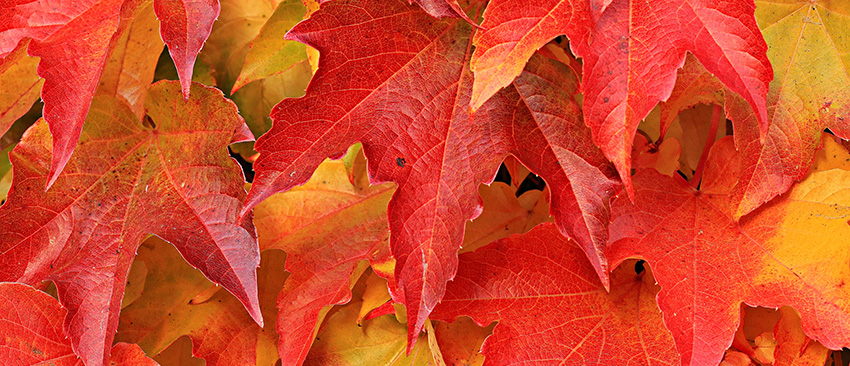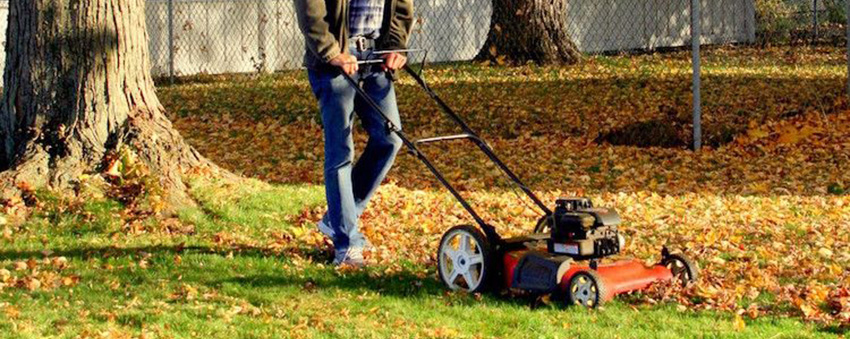Every year around this time, we are all enraptured by the beautiful colors that appear as our trees prepare for their winter slumber. For many, this breathtaking sight also triggers anxiety as those many-hued paratroopers descend to the ground en masse. The hours of raking, the hours bagging, the back-breaking carrying to the curb…it’s no wonder people dread it!

We invite you to take a more holistic and less time-consuming approach this year. Mulching leaves into your lawn actually provides all the fertilizer it will need to come back healthy and strong next spring. A lot of homeowners and landscapers throw away this FREE source of natural fertilizer and instead pay to apply commercial fertilizers that are high in nitrogen that poisons our local waters and kills wildlife.
Sounds interesting, just how do I do this leaf mulching thing?
Any type of lawn mower can do the job; however, purchasing a blade specifically designed for mulching works much more efficiently.
- Start by removing the bag that collects the clippings.
- Set the blade to its highest (or tallest) setting.
- Mow the lawn as you normally would on any other day.
The goal is to shred the leaves into tiny pieces about one-half inch in size. If you are using a regular lawnmower blade or have a lot of leaves it may take a few passes, but when you are done the leaf shreds should have fallen between the blades of grass, magically revealing much of the lawn! Way easier than raking and bagging, right?

If you can’t see your lawn after several passes, put the bag back on the mower and do one or two more passes. The collected leaf clippings can then be distributed under your bushes, in your flowerbeds, and around other plants. As the mulched leaves decompose they feed the worms and microbes that naturally enhance the soil with all the nutrients your plants and lawn need to thrive…for free!
For those with landscapers, it’s as easy as simply asking them to do it for you. They may not be happy about losing the fertilizer contract with you, but the end result will be much better for you, your lawn and the environment.
But I don’t rake, I move my leaves around with a leaf blower.
Although very convenient, you’re still left with piles of leaves you need to bag up and drag to the curb. The bigger issue is that leaf blowers stir up debris and launch minute dust particles and allergens into the air that get into the lungs, causing respiratory and health problems for you, your children and your pets. If you can, please try to avoid using leaf blowers.
